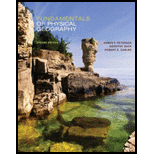
The factors that causes the major climate changes along the 40ºS latitude line from west to east across South America
Answer to Problem 1FQ
Major causes for the climate changes along the 40ºS latitude line from west to east across South America are the westerlies flowing out of the subtropical high and bringing moisture from the Pacific Ocean to the west coastal portion of the parallel and the rain shadow effect of the Andes to the east.
Explanation of Solution
From the image, the areas of savanna climate are located adjacent to the rainforest climates of South America. Chile is located along the west of the 40ºS latitude line of the South America. It lies between the Andes in the east and Pacific Ocean in the west. Chile experiences Marine west coast climate receiving a year-round ample precipitation as the west coast location is under the influence of westerlies and has mild to cool summers.
Moving to the east of the latitude line, the highland locations of the Andes or Andean Mountains exist there. Andean Mountains are the longest continental mountain range in the world that forms a continuous highland along the western edge of South America. The Andes experiences two different climatic conditions due to the location of pacific ocean to one side and desert regions on the other. As local topography being the most important factor for receiving precipitation, Chilean Andes experiences wet climatic condition as it parallels the western coast of South America by receiving ample precipitation, both cyclonic and orographic, falls on the windward side of the mountains. The Andean mountains in Argentina experiences dry climates as it reaches
Moving further to the east of the latitude line, semi-arid climatic conditions exist in Argentina. Argentina is bordered by Chile in east and Uruguay on the west. Steppe (semi-arid) climate regions have slightly higher precipitation totals than deserts and can support grassland vegetation. The semiarid climates are transitional zones between the humid climates and the deserts.
Arid regions typically have a central core of desert climate, surrounded on the boundaries by transition zones of semi-arid steppe climates. The arid conditions within continental interiors are because of their remote locations from moisture-carrying winds. These arid lands include the cold-winter deserts of South America. The dry conditions of Argentina are due to the mountain barriers (Andes) which block the migration of rain-bearing air masses from the Pacific Ocean in the west. Hence, the rain-shadow conditions help to clarify the Patagonian Desert of Argentina.
Want to see more full solutions like this?
Chapter 7 Solutions
Fundamentals of Physical Geography
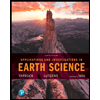 Applications and Investigations in Earth Science ...Earth ScienceISBN:9780134746241Author:Edward J. Tarbuck, Frederick K. Lutgens, Dennis G. TasaPublisher:PEARSON
Applications and Investigations in Earth Science ...Earth ScienceISBN:9780134746241Author:Edward J. Tarbuck, Frederick K. Lutgens, Dennis G. TasaPublisher:PEARSON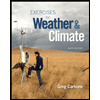 Exercises for Weather & Climate (9th Edition)Earth ScienceISBN:9780134041360Author:Greg CarbonePublisher:PEARSON
Exercises for Weather & Climate (9th Edition)Earth ScienceISBN:9780134041360Author:Greg CarbonePublisher:PEARSON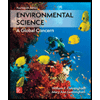 Environmental ScienceEarth ScienceISBN:9781260153125Author:William P Cunningham Prof., Mary Ann Cunningham ProfessorPublisher:McGraw-Hill Education
Environmental ScienceEarth ScienceISBN:9781260153125Author:William P Cunningham Prof., Mary Ann Cunningham ProfessorPublisher:McGraw-Hill Education Earth Science (15th Edition)Earth ScienceISBN:9780134543536Author:Edward J. Tarbuck, Frederick K. Lutgens, Dennis G. TasaPublisher:PEARSON
Earth Science (15th Edition)Earth ScienceISBN:9780134543536Author:Edward J. Tarbuck, Frederick K. Lutgens, Dennis G. TasaPublisher:PEARSON Environmental Science (MindTap Course List)Earth ScienceISBN:9781337569613Author:G. Tyler Miller, Scott SpoolmanPublisher:Cengage Learning
Environmental Science (MindTap Course List)Earth ScienceISBN:9781337569613Author:G. Tyler Miller, Scott SpoolmanPublisher:Cengage Learning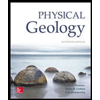 Physical GeologyEarth ScienceISBN:9781259916823Author:Plummer, Charles C., CARLSON, Diane H., Hammersley, LisaPublisher:Mcgraw-hill Education,
Physical GeologyEarth ScienceISBN:9781259916823Author:Plummer, Charles C., CARLSON, Diane H., Hammersley, LisaPublisher:Mcgraw-hill Education,





